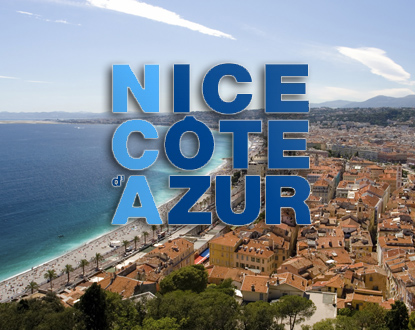This morning, the civil and military authorities commemorated the centennial of the birth of General Louis Delfino. The tribute to this hero from Nice of the Second World War is unanimous, considering a career that deserves respect and reflection.
But alongside this ceremony in honor of General Louis Delfino, the residents of the boulevard bearing his name still ask the same question: Where has the bronze bust of General Louis Delfino gone? In place of this sculpture, the protocol installed a photo of the one being honored that morning. Whether due to the caprices of the weather or mere chance, a gust of wind toppled the portrait of the illustrious aviator in the midst of the speeches.
In his speech, the mayor of Nice took advantage of the centennial of General Louis Delfino’s birth to announce the rehabilitation of the commemorative stele in the Normandie-Niémen Garden. The visual of this project was publicly unveiled … still without the military bust!
Let us recall here that this sculpture (forever vanished?) was the work of Marcel Mayer, an artist who also created the “Stèle des Maréchaux de France” in the Alsace-Lorraine Garden in Nice, the bust of Jean Médecin at the beginning of the Promenade des Anglais, and that of Louis Armstrong in the Arènes de Cimiez Garden. Another work by Marcel Mayer, the bust of General Delfino, was thus installed in the Normandie-Niémen Garden. Unfortunately, since the renovation of this space in 2006, this sculpture has been missing and could not be reinstated. Apparently, no one knows today if this bust, either stolen or misplaced, resides in a private collection or was melted down by metal traffickers.
Today, with the commemoration of General Delfino’s centenary, we also have the opportunity to pay tribute to this sculptor, a true free spirit who claimed independence from schools and movements. Marcel Mayer described himself as a “classical-modern,” a subtle blend of the rigor of classical masters and the inventiveness of moderns.
Albert Camus wrote these lines about Marcel Mayer:
“Without the world’s light, forms would not exist. Yet, forms, in turn, add to the world’s light. The real universe, with its shapes and splendor that inspire bodies and statues, receives from them, in return, a second light that corrects and limits the light of heaven. Thus, a sculptor would be nothing without reality, and yet, it is he who helps reality to exist. Therefore, he cannot ignore it nor accept it servilely. Between these two extremes lies the realm of Art, which MAYER traverses in every direction, seeking his law that will determine the ceaseless becoming of forms. But he seeks it neither in schools nor in doctrines, only eager, brutish, prolix, and strong, like the passion to live and create.”
Hervé CAEL, President of the “Vivre Nice” Association


